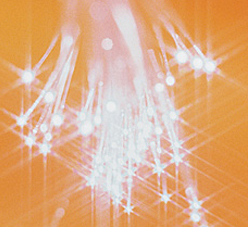
If the termination shows no physical problems and the testing indicates an acceptable level of loss for length of cable, then the optical connector is ready for use.
Wipe the tip of the fiber clean and place a protective dust cap on it. Now the process is complete.
While this procedure does get easier with practice, it is not difficult to master and can be done relatively quickly, even by a novice.
In fact, once you are completely familiar with the finishing steps, the most time-consuming aspect of the entire process is waiting for the epoxy to dry.
And, for those who may still have reservations, there are “quick-crimp” connectors that eliminate the epoxy and finishing steps altogether. While these “quick-crimps” are more convenient in the field, the connection has slightly more optical signal loss.
Optical Splices
While optical connectors can be used to connect fiber optic cables together, splicing — the process of terminating one fiber directly to another without use of a connector — is often more desirable because it provides lower signal loss. Two of the most common types of splices are the mechanical splice and the fusion splice.
In a mechanical splice, the ends of two pieces of fiber are cleaned and stripped, then carefully butted together and aligned using a mechanical assembly. A gel is used at the point of contact to reduce light reflection and keep the splice loss at a minimum. The ends of the fiber are held together by friction or compression, and the splice assembly features a locking mechanism so that the fibers remain aligned.
A fusion splice involves melting (fusing) together the ends of two pieces of fiber. The result is a continuous fiber without a break. Fusion splices require special, expensive splicing equipment but can be performed very quickly, so the cost becomes reasonable if done in quantity.
Because fusion splices are fragile, protectors and a plastic coating called shrink tubing are usually placed around the spliced area to protect it from breakage.
Fiber is virtually unaffected by outdoor atmospheric conditions and electrical interference; it can be lashed directly to telephone poles or electrical cables without concern for extraneous signal pickup. Because it is so resistant to the environment, fiber is ideal for connecting systems between buildings when cable must be laid outside, underground.
In fact, if the proper type of fiber cable is used, it can be laid directly in the ground with no concern for exposure to moisture or humidity. And if a cable is accidentally severed, there is no risk of a spark causing a fire or endangering personnel.
